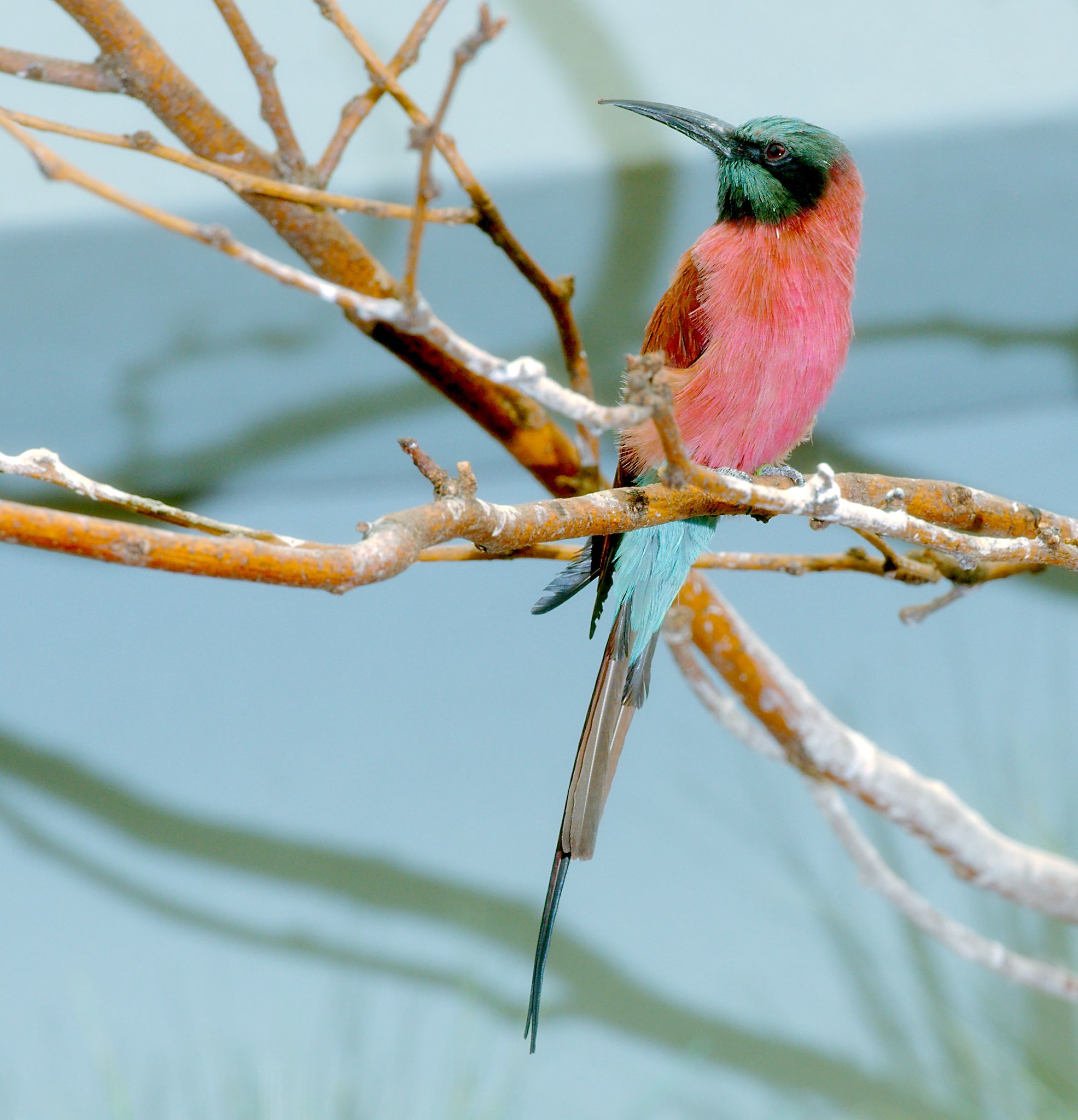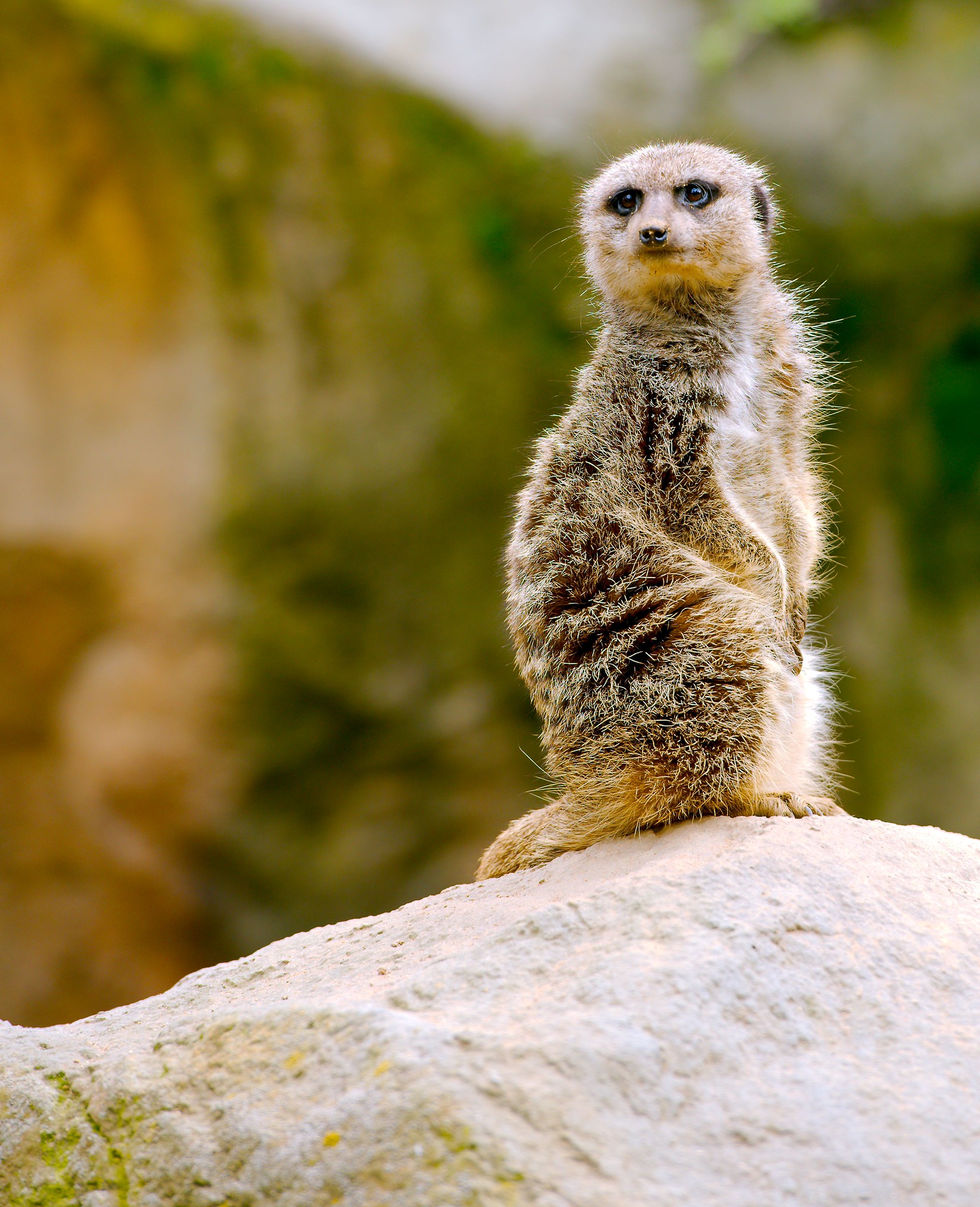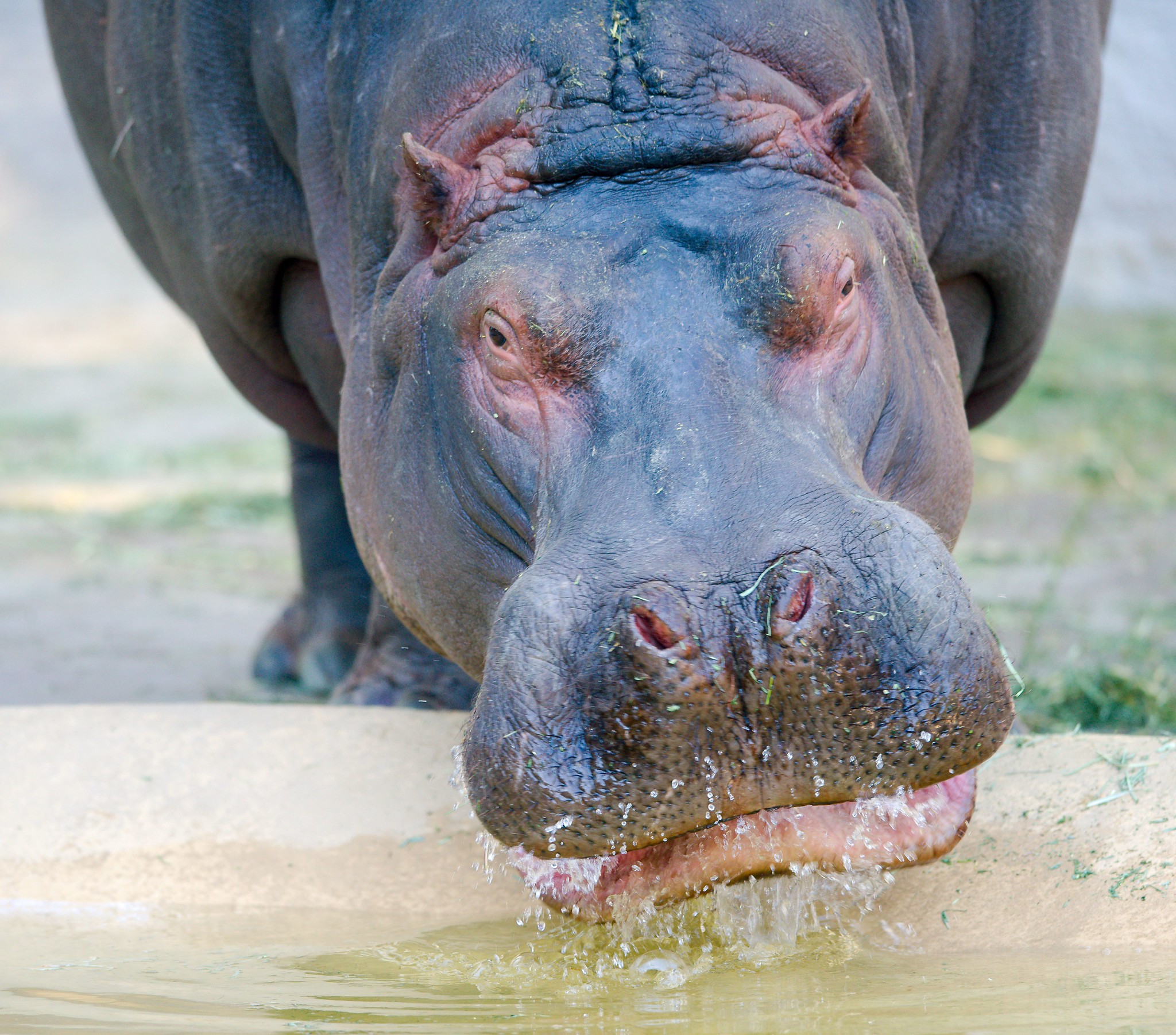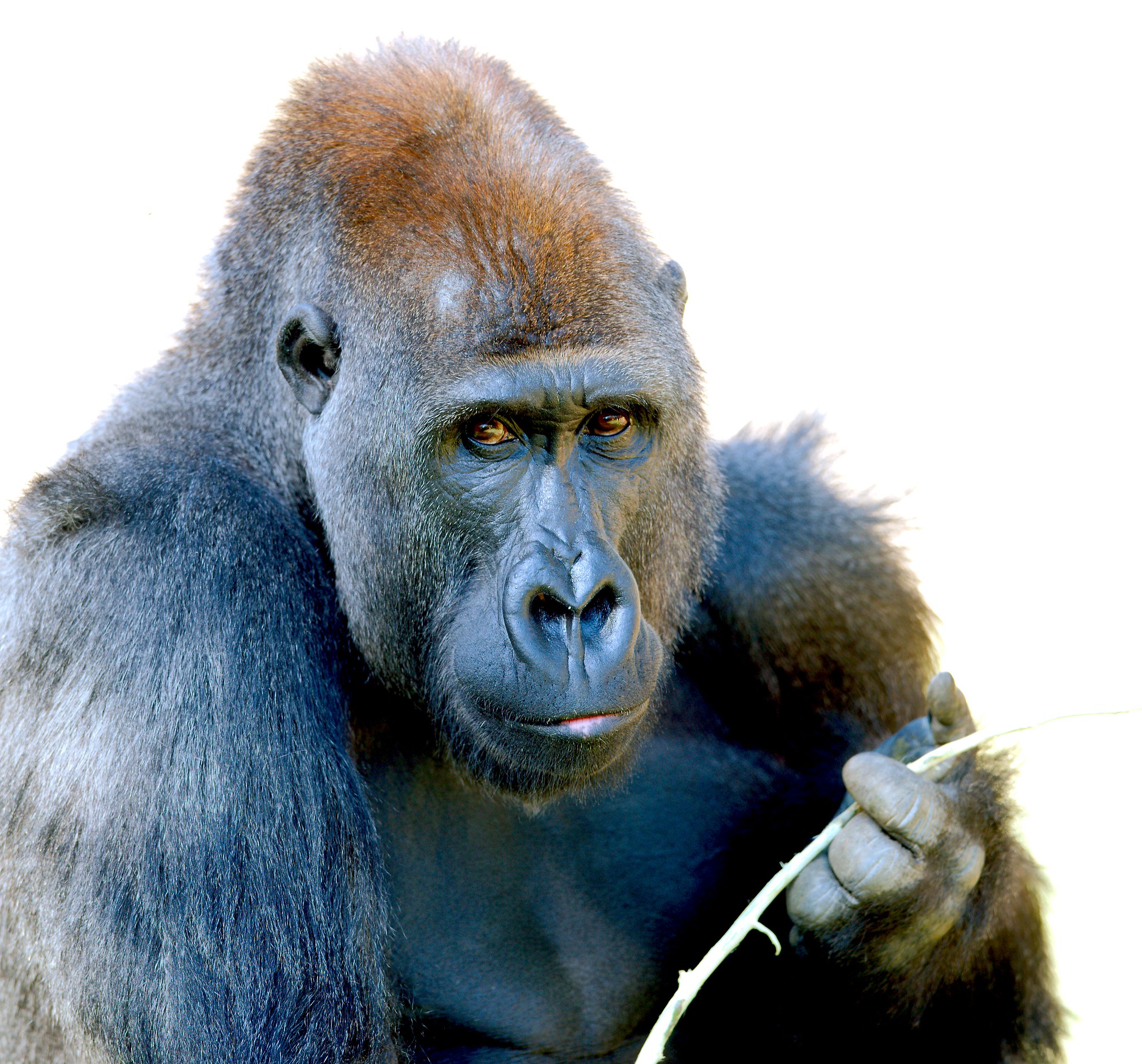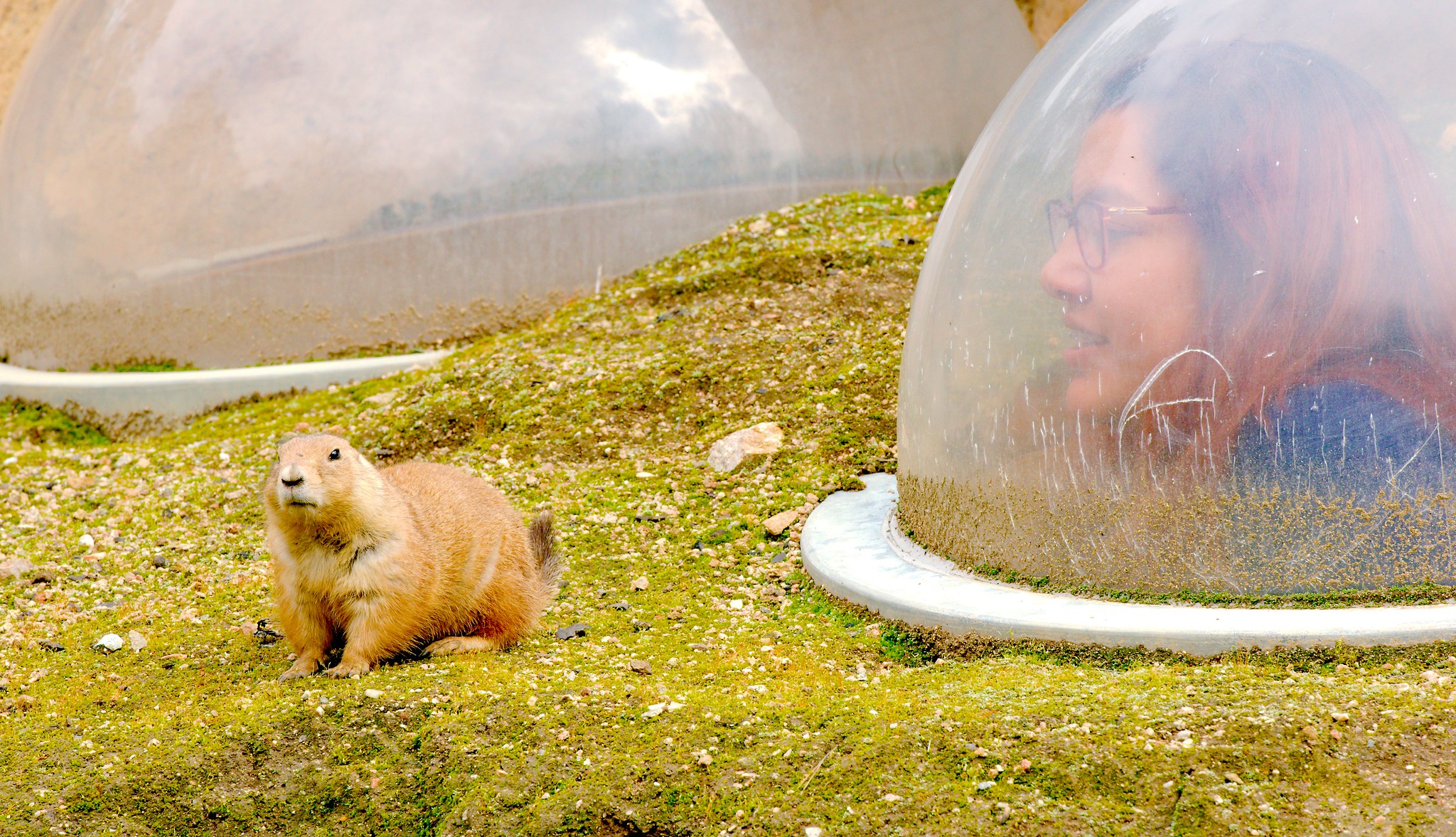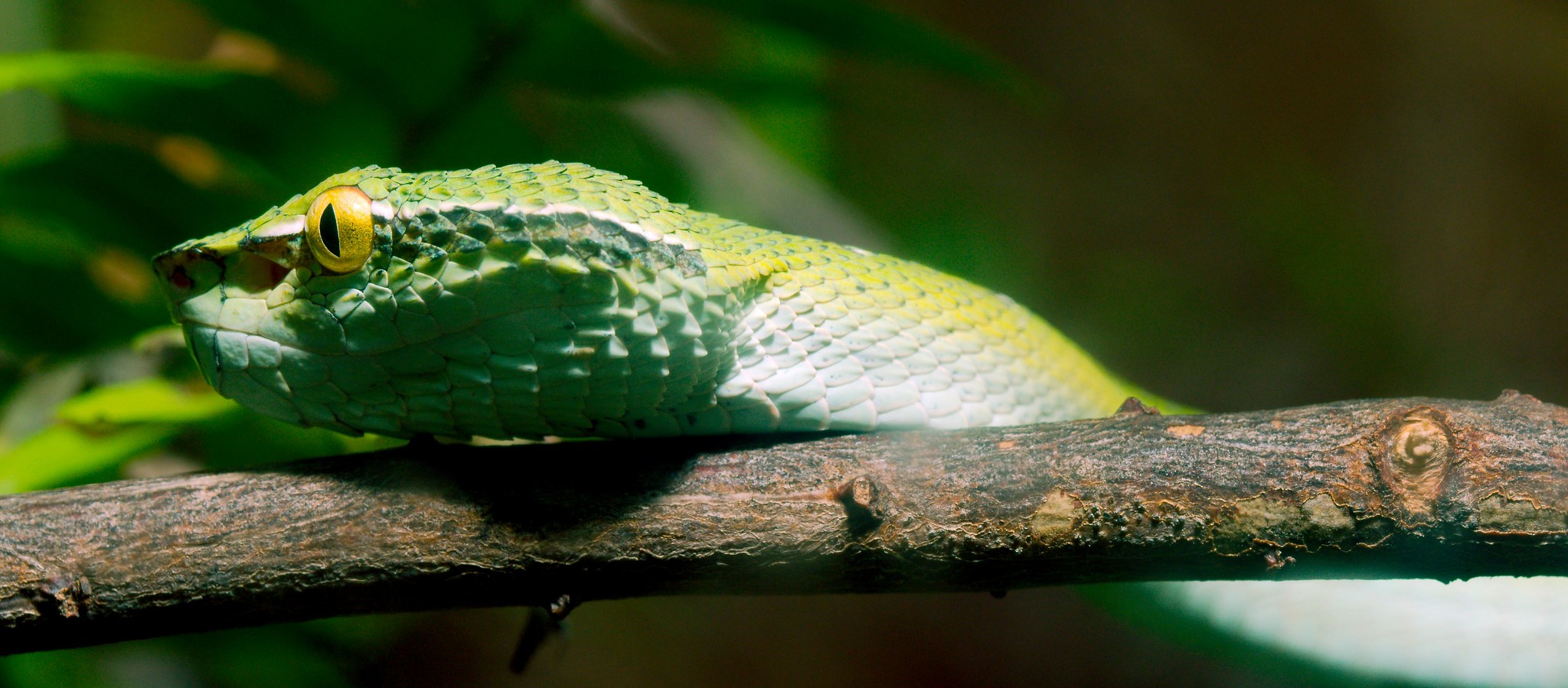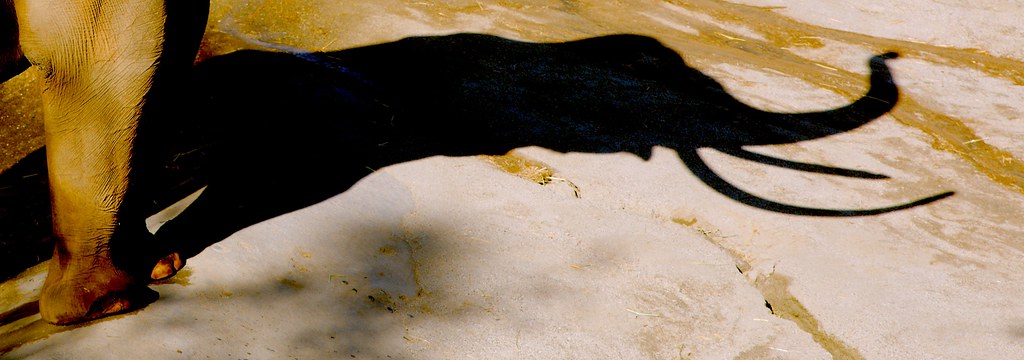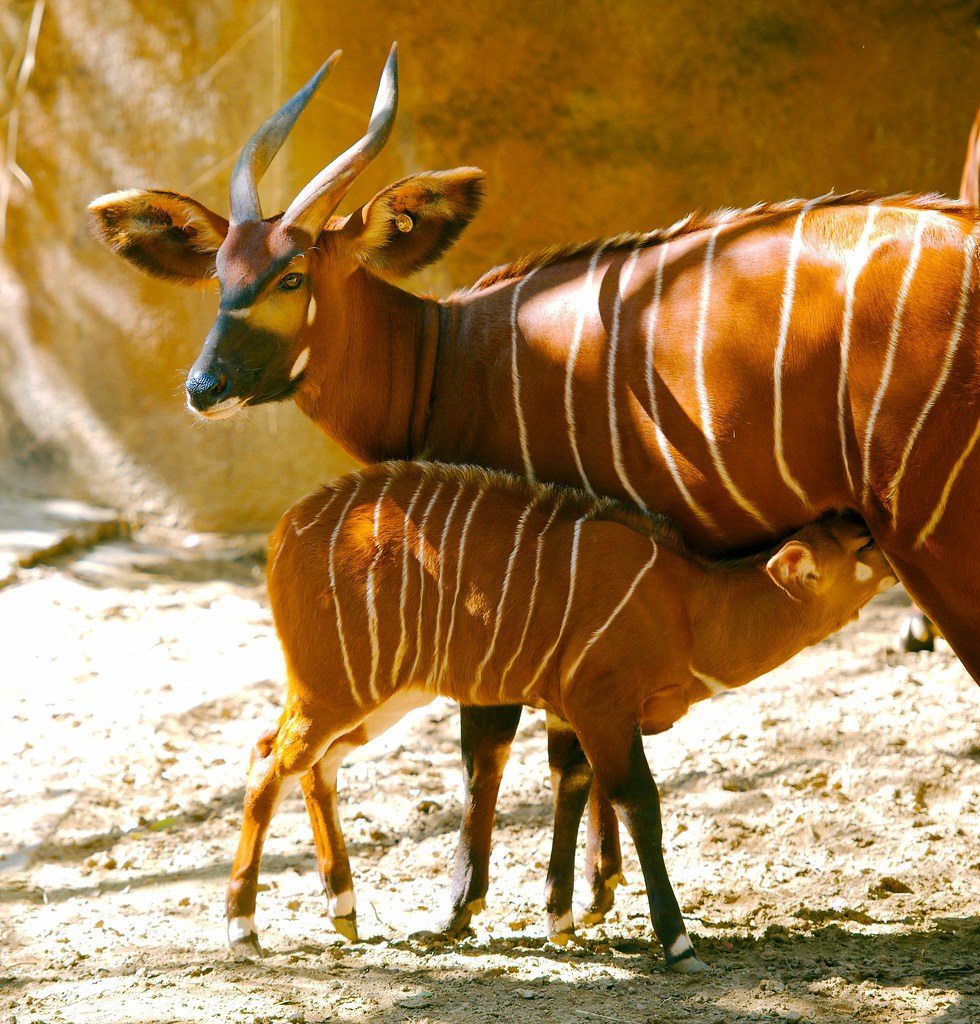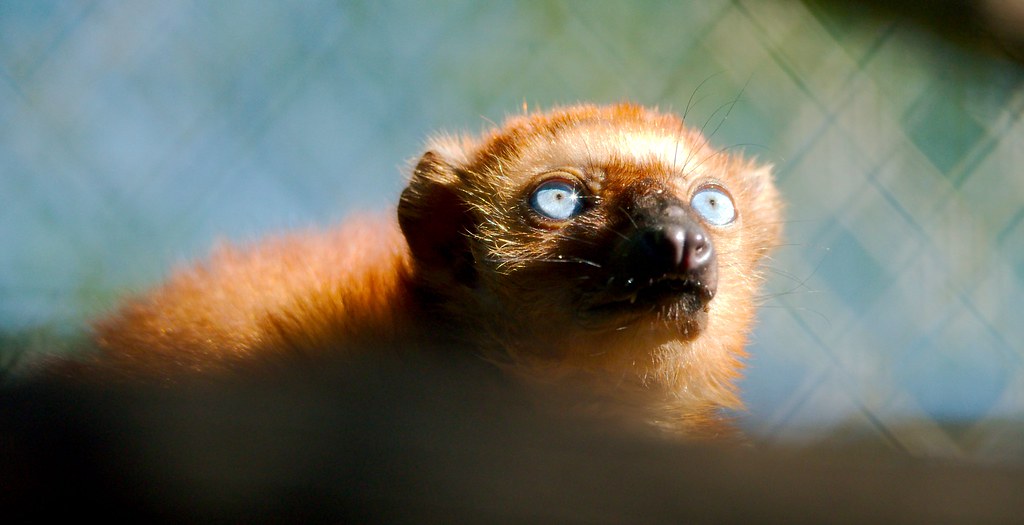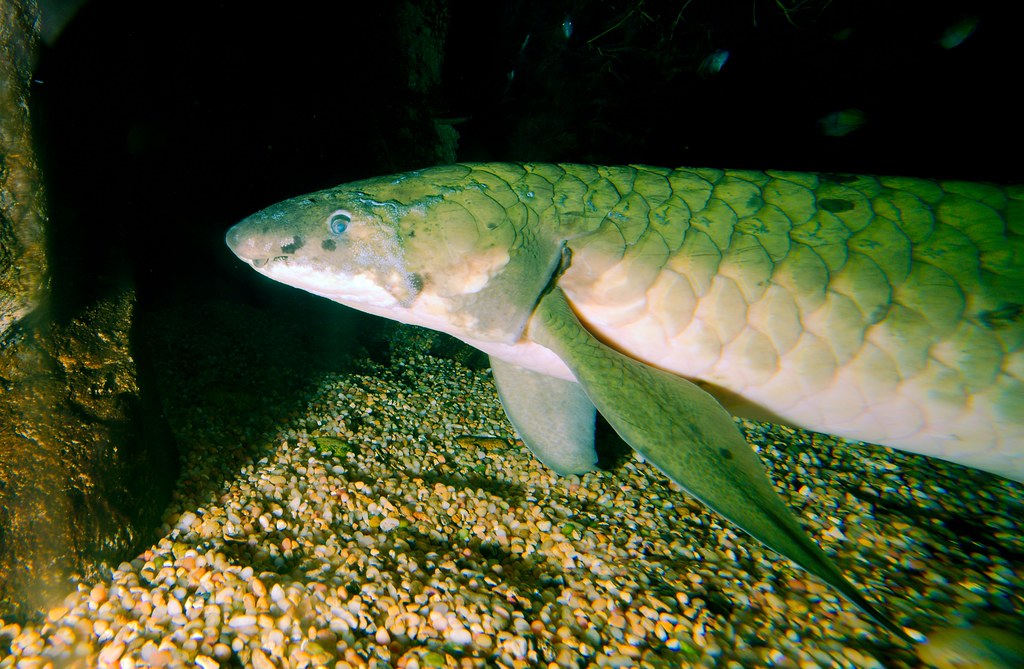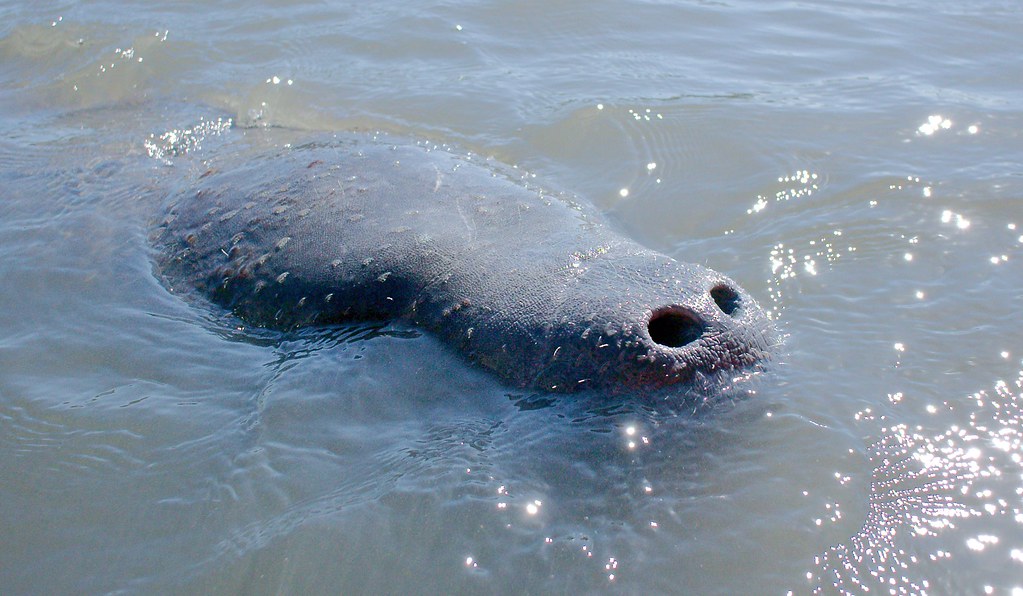The giant river otter is difficult to find in zoos and in the wild. They are about twice the size of the North American river otter. Previously, I had only seen these otters at the Birmingham zoo, where the exhibit was indoors and the light made photography difficult. At the LA zoo, they have truly impressive amount of outdoor space … even more impressive given the value of land in the area. I suspect these otters work consulting jobs when the zoo closes to be able to afford it.
Carmine Bee Eater
Sometimes you read a name and go “hmm”. This often leads to wikitrails.
In this case, the word carmine is a word for deep red. It is linked to cochineal, which is a sort of insect from which red dyes have traditionally been made.
From wikipedia, the etymology goes: carmine <- carmin (12 century French) <- carminium (medieval latin) <- qirmiz (Arabic) <- carmir (Middle Persian). The word "carmir" means, as one might expect, "red". So far, so good, but here it gets interesting ... "carmir" is believed to come from "kṛmi-jā", the Sanskrit word for "insect-produced", as "krmi" means "worm" or "insect". But that's okay, right, because the cochineal makes the carminic acid from which the dye is made. However, while today they are rather wide-spread, back in the days that Sanskrit was commonly spoken, the cochineals were only found in central and south America. Barring some of the rather interesting and, shall we say, wildly hypothetical, websites out there, between 2000 and 600 BCE there was very little knowledge in India about how the Olmecs were making cloth in what we now call Mexico. So how did this happen? The answer is that, in the Mediterranean area, a scale insect called "kermes" also produced a red dye, from which we get the word "crimson": crimson <- carmesinus (Latin) <- qermez (Arabic) <- kṛmi-jā (Sanskrit, again). Carmesinus, of course, is where we got the word "carminc" for the acid. But wait! Did India trade with the Mediterranean world when Sanskrit was being spoken? After all, if the kermes only lived in the Mediterranean world, how did kṛmi-jā come to be borrowed in the first place? We know that Scylax, a Greek explorer, was sent to explore the Indus river in 515 BCE. Is it possible that he traveled so far, he fell through a time portal and went back at least another century to land in India where people could marvel over his red clothes and, as he explained how they were made, they came up with "kṛmi-jā", so we could eventually get the words "carmine" and "crimson"? I'm sure there is a website out there somewhere that offers this as proof, but this explanation seems somewhat far fetched to me. However, according to Mira Roy who studied the red dyes of pre-colonial India in 1977 (aren't you glad someone did?), the word krmi/kermes does appear to enter the language in the post-Vedic period (500 BCE to 300 AD). More interestingly, she points out that there were three insects from which red dye was produced: - The lac* <- lak (Persian) and lakh (Hindu), whose name comes from "hundred thousand", referring to the number of eggs it took to make the dye (though I doubt they actually counted them to that level). - The indragopa which is mis-translated by Mira Roy (and many Indian dictionaries) as the cochineal. As noted previously, this can't be right, because the cochineal is South American and didn't reach India until well after the name kṛmi-jā was applied to mean red. This is covered in decent detail by Siegfried Lienhard who concludes it's actually a red velvet mite, which is bright red, but not useful for creating dyes. - And finally, our old friend, the kermes or krmi, which was very popular in Europe for dyeing***, but that as Mira Roy notes, was only discovered to have the dye-producing properties in the POST-Vedic period. So what do we have going on here? 1) We have a word that is believed to originate from a Sanskrit word 2) An insect that was known to make that red dye in Greece, but before the Greeks encountered the Indians speaking Sanskrit 3) An insect that was known to make that red dye by the Olmecs, who (we sure hope) never encountered the Indians at all 4) An insect** that is bright red, was known to the Indians speaking Sanskrit, but that cannot be turned into dye All of this probably means that the word "kṛmi-jā" is a false etymology. It is more likely that the root of both "carmine" and "crimson" has nothing to do with mites or scale insects at all, which makes sense because neither does this bird. It eats bees. ---------------------------------------- * Amusingly, these insects are referred to as subsisting on trees that produced "electrum", which meant both an alloy of gold and silver and what we now call amber. It likely meant the latter first and was later applied to the alloy because of the yellowish colour of the alloy, even though we now know amber exists in many colours, only one of which is called "amber". ** Technically not an insect *** This is where "in the grain" comes from, as the kermes eggs were so fine they were referred to as "grains", but that have nothing at all to do with actual grain. More information: - Siegfried Lienhard on "indragopa": http://www.indologica.com/volumes/vol06/vol06_art14_Lienhard.pdf - Philip Smith on amber: http://penelope.uchicago.edu/Thayer/E/Roman/Texts/secondary/SMIGRA*/Electrum.html - Mira Roy on Indian dyes: http://insa.nic.in/writereaddata/UpLoadedFiles/IJHS/Vol13_2_2_MRoy.pdf - Sanskrit: https://en.wikipedia.org/wiki/Sanskrit - Crimson etymology: https://en.wikipedia.org/wiki/Crimson#Etymology - Carmine etymology: https://en.wikipedia.org/wiki/Carmine#Etymology - Kermes: https://en.wikipedia.org/wiki/Kermes_(dye) - Cochineal: https://en.wikipedia.org/wiki/Cochineal
Meerkat performing Hero and Leander
Hippo
Gorilla
Cape Rock Hyrax
Prairie Dog performing
Temple Viper
Elephant
Bongo
The bongo almost died out from disease in the 1890’s. More recently, growing human populations have created another threat.
As is common practice, some bongos were rescued and bred in zoos until enough time had gone by to repair the environment. Then, they were re-introduced to their native areas. Much to people’s surprise, though, they were not welcomed as having been missing. Instead, now they are being poached at a level that has not before been seen. The theory is that, when the bongos died out in the local area, the superstition against eating or touching bongo (believed to cause epilepsy) died out as well. So more bongos were eaten.
Interestingly, today, a new belief is arising to protect them. As more westerns visit the area, locals are learning that the bongos are worth more in ecotourism and trophy hunting fees than they are as food.
Global economics seems to be replacing traditional faith systems everywhere.
Blue Eyed Black Lemur
The blue eyed black lemur is brown (well, the females are).
It is also one of the most endangered primates on the planet, expected to go extinct in the wild by 2026.
The way they do these calculations is interesting. As is often the case, not enough is known about the species to truly calculate a “death date”. Instead, assumptions are made:
– Assumption that a generation is 8 years long
– Knowing the rate of habitat degregation, then comparing it to the generation length … in this case, more than 80% habitat loss in three generations
– Amount of population fragmentation and density in remaining pockets, ranging between 24-97 individuals per square kilometer
– Group size of 4-11 individuals
– Infant mortality of around 23%
– What the animal eats – in this case, we’re fortunate, as they are highly omnivorous
So the calculation basically says: How many do we have? How quickly do they make more of themselves? How quickly do they die? Given what we know about what they eat and where they live, as things change, how much sooner will they die and how much more slowly will they reproduce? That’s your projected death date.
The good news is that you can change this number by:
– Improving their habitat through education of native peoples, funding, and experimentation
– Helping them to reproduce more quickly through habitat creation, genetic analysis, and artificial insemination
– Helping them to live longer and therefore reproduce more often, through veterinary and nutritional assistance
There is only one type of organization that focuses on all three of these activities.
Zoos.
Australian Lungfish
Pelican
Sunset
Osprey
When I was reading about ospreys a few years ago, I ran across several stories about how, unlike other birds of prey, the osprey’s talons are strongly curved, making it easier to them to catch fish. The tradeoff, however, is that if they catch too large of a fish, they can pulled under the water by the weight of their prey. This happens most often to the young ones, and can make them drown before they get to adulthood.
I have never gotten a photo of this behavior, of course, as I usually do not bring my underwater camera with me when I’m shooting birds.

